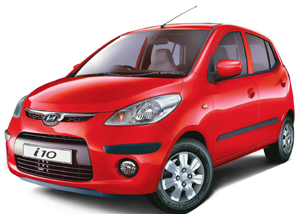A few days back I got an email from a reader. This email essentially said that the world had moved on from demonetisation/notebandi and it was time that I did as well.
Well, people do get bored. So, does the media.
And in the process, they stop following issues that they did once. As fatigue sets in, this essentially leads to a situation that issues do not get followed to their logical conclusion.
It’s like a daily soap opera which keeps undergoing multiple changes in plots, depending on what the viewers want. Or rather depending on what the managers running the show think the viewers want.
The trouble is that my writing is not like that. Also, now we have some data points to properly analyse notebandi and its impact on the Indian economy.
And it would be rather stupid of me to stop writing on the issue right now. Hence, my writing on notebandi is likely to continue in the months to come and who knows, possibly even years.
So, dear reader, that was that. Let’s now cut to today’s edition of the Diary.
Take a look at Figure 1. It shows the two-wheeler sales over the last five months.
Figure 1:
Figure 1 clearly shows that there has been a downward trend in two-wheeler sales since September 2016. Notebandi only accentuated this trend. Having said that there has been some recovery in sales in January 2017.
Two-wheeler sales are a very important data point. They show the spending potential of many Indians. They also have a very high correlation with India’s informal economy, which doesn’t get captured very well in the gross domestic product(GDP) numbers.
As Ritika Mankar Mukherjee and Sumit Shekhar of Ambit Capital write in a recent research note: “History suggests that there exists a strong correlation between the nominal GDP generated by the informal sector and… two-wheeler sales data.” And given that two-wheeler sales have shown a largely downward trend lately, what can be said? As Mukherjee and Shekhar point out: “The latest data… shows a marked deterioration underway in the informal sector of the economy.”
As mentioned earlier, the informal sector is not captured well enough in the GDP numbers. As the Economic Survey of 2016-2017 points out: “It is clear that recorded GDP growth in the second half of FY2017 [October 2016 to March 2017] will understate the overall impact because the most affected parts of the economy-informal and cash based-are either not captured in the national income accounts or to the extent they are, their measurement is based on formal sector indicators. For example, informal manufacturing is proxied by the Index of Industrial Production, which includes mostly large establishments. So, on the production or supply side, the effect on economic activity will be underestimated.”
Given this, data points like two-wheeler sales become very important in gauging the real impact of notebandi on the Indian economy. Let’s see how the data for the remaining two months (February and March 2017) comes out. But from four months of data that is available for the second half of this financial year, it can safely be said that things aren’t looking good on this front. And this should be a huge reason to worry. As per Mukherjee and Shekhar, “The informal sector accounts for ~40% of India’s GDP and employs close to ~75% of the Indian labour force.”
Now let’s look at domestic passenger car sales between September 2016 and January 2017. Take a look at Figure 2.
Figure 2: As Figure 2 shows, the domestic passenger car sales have recovered much more quickly than two-wheeler sales, in the aftermath of demonetisation. The January sales were only 4.5 per cent lower than the September sales. In case of two-wheelers, the January sales were still 30.6 per cent lower than the September sales.
As Figure 2 shows, the domestic passenger car sales have recovered much more quickly than two-wheeler sales, in the aftermath of demonetisation. The January sales were only 4.5 per cent lower than the September sales. In case of two-wheelers, the January sales were still 30.6 per cent lower than the September sales.
What does this tell us? It tells us very clearly that rural India was impacted much more by demonetisation. It tells us that the not so well off have been more impacted much more by demonetisation than the well off. As writer Amit Varma put it in a recent speech: “In all this, the rich got away… You see a reflection of this in automobile sales. They have plummeted for two-wheelers and three-wheelers, but SUV sales are steady. The rich got away.”
And that is something worth thinking about.
The column was originally published on Equitymaster on February 20, 2017

